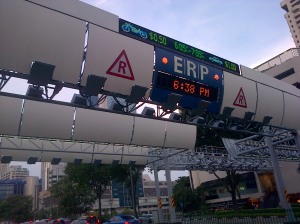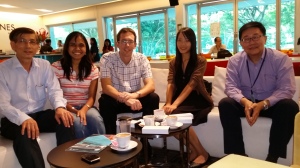Considering how many of Britain’s rich and powerful take the train to work, it seems odd to describe rail commuters as hard done by. And yet some undoubtedly are. Last week the government announced the latest round of fare increases: an average rise of 4.1%, rising to as much as 9.1% on some routes.
This comes as successive governments have tried to increase the proportion of the costs of the rail network paid for by passengers rather than taxpayers. According to the Office of Rail Regulation, the taxpayer contributed £4 billion towards the costs of the rail system in 2011/12 compared with 7.2 billion from rail passengers. To address this, fares have been allowed to rise by more than inflation.
The measure of inflation used is the Retail Price Index (RPI), based on the price of a basket of goods. This year the government is permitting an increase of RPI plus 1% (a total of 4.1%). The additional money is passed through to the government, so the train operator does not directly benefit.
As part of its franchise agreement with train companies, the government regulates certain fares: season tickets on commuter routes and off peak returns on longer distance journeys. Regulated fares account for roughly half the passenger revenue of the rail system, and it is these that have been increased. Other tickets, including advanced purchase tickets and first class fares, are unregulated.

Who takes the hit?
Train operators in London and the South East earn around half of the UK’s overall rail revenues, mostly from commuters. This figure reflects the expensive season tickets, long journey times and high rail usage among commuters in the area. Of the rest of the revenue, more than two thirds comes from users of long distance services. A comparatively small amount comes from commuters into other cities.
Increasing rail fares is a relatively progressive way for the government to raise revenue. London commuters tend to be better off than most, while long distance services are heavily used by business travellers. Leisure trips are the other main long distance journey purpose and these are optional; if people cannot afford the trip, they can simply not take it.
However, these figures are averages. What about people working in London in low paid jobs? Many commute considerable distances because they cannot find a job locally, and they cannot afford to move closer to the centre. These are the people who will really be hit hardest by these increases.
We do not yet know what the actual increases will be station by station. Train operators are allowed some discretion in the amount by which they increase individual fares, provided that the average increase does not exceed the regulated level.
But passengers from stations like Reading, Brighton, Luton and Chelmsford currently face an annual season ticket rate of £3500-£4000 for a London commute, suggesting that they are likely to end up paying £150 or more per year. Some will face an even steeper increase.
Feeling the squeeze
Increases in rail fares are nothing new, of course, even when adjusting for inflation. But the current economic climate is the key difference this time round.
The normal trend has been for disposable incomes to rise faster than inflation, meaning that an increase of RPI plus 1% would typically lead to rail fares actually taking a smaller share of people’s incomes than in the previous year.
However, the current recession has seen disposable incomes rising by less than the rate of inflation. According to the Office of National Statistics, real average hourly earnings have fallen by 8.5% since 2009.
As people are able to buy less and less with their wages, so rail fares are taking a steadily increasing share of commuters’ incomes. We can expect these latest increases to hurt far more than those in earlier years when real wages were rising.
There is another aspect to steadily rising rail fares. Partly because of decisions the government has taken to hold down increases in fuel tax, the overall cost of motoring has risen far more slowly than rail fares in this period. This relative price rise has not stopped rail continuing to gain traffic at a time when road traffic has stagnated.
This leads us to the key question of what our rail policy is actually for. Do we want fares to encourage rail traffic to divert to road, rather than vice versa, with the resulting consequences for congestion, carbon and the environment more generally?
Unless rail fares policy is carefully thought through as part of a policy for pricing all modes of transport, commuters will not be the only ones hit by high fares; the whole country’s transport system will suffer too.
Professor Chris Nash
www.its.leeds.ac.uk/people/c.nash
23 August 2013












